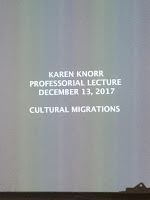Pitt Rivers Museum(PRM), Oxford
https://www.prm.ox.ac.uk/pittriver.html
 |
| Pitt Rivers (b.1827 d.1900) |
This extraordinary museum had been recommended to me on several occasions in relation to my research and artworks and I was intrigued and inspired by the vast array of global cultural items on display. You enter the PRM via Oxford university's Museum of Natural History (OUMNH). A large, black bear greeted my arrival (alas, the taxidermy kind) into this land of wonder and awe and travelling past dinosaur bone constructions, cabinets of land, sky and sea creatures, the PRM is located at the rear of this expansive taxonomy. Arranged over three floors in cabinets made of dark wood, the artefacts are dimly lit to conserve their materiality. There is an atmosphere about this place, one of learning, one of wonder, one of history, one of stories from the past, one of ritual, one of belief. The ancestors are here!
 |
| Tsanta |
The Tsantas (shrunken heads) were of particular interest to me. These gruesome talismans held a strange power over the viewer, drawing them in, inviting them to look closer. I was compelled to examine these objects for some time, learning about their construction and ritual use by the Javaroian tribes from Ecuador and Peru. The complex process of preserving the human form is revealed to the viewer through informative labels and is not for the squeamish. The removal of flesh, skull and brains, with the shaping of features through hot sand and stones, the head was then blackened (preserved) with vegetable dyes and charcoal. The eyes and lips were sealed shut with threads to keep in the sacrificed spirit. It was this symbolic power which captivated me. The idea that these tribes could garner the power of their enemies through the souls ensnared within these preserved heads was enthralling. I suppose I have been seeking and capturing the power of my ancestors and embalming this within my Mammets. My latest Mammet 'heads' have developed into contorted forms, taking on a surreal and otherworldly presence. I often return to the Capuchin Catacombs(Palermo,Sicily) in my mind's eye and think about the stacked remains of nobles and everyday folk, I then see my ancestors' contorted faces at the transition between life and death. Not all of these are transitions are struggles but shifts from one emotion to another. The complexity of human skull cavities are revealed under taut or slackening flesh. The material forms used in these Mammets govern the abstraction and contortion. The wax over clay amplifies the clay's fissures but also represents a decaying skin. This combination of materials was also seen in the PRM noting man's early attempts at casting. This crude and simple method has an honesty and a materiality which informs my practice. My use of hair in these Mammets has taken a ritualistic direction, imbibing my figures with a physical portal property for communicative exchange with others' lives. These Mammets have become echoes of past lives and talismans for the present company.
 |
Mammet (Catacomb) 2018
Sara Jayne Harris |
 |
| Capuchin Catacomb Figure (Palermo, Sicily) |
 |
Mammet (Puridad) 2018
Sara Jayne Harris |
 |
| Waxed clay head at PRM |








Comments
Post a Comment